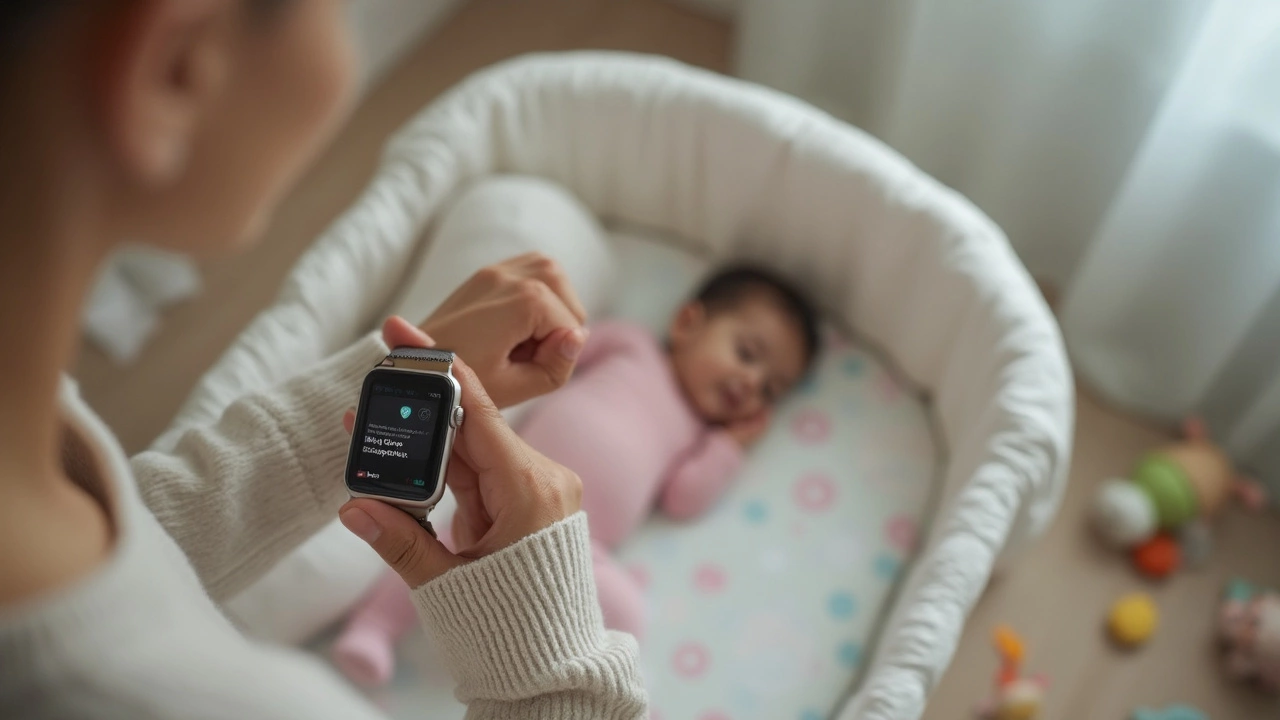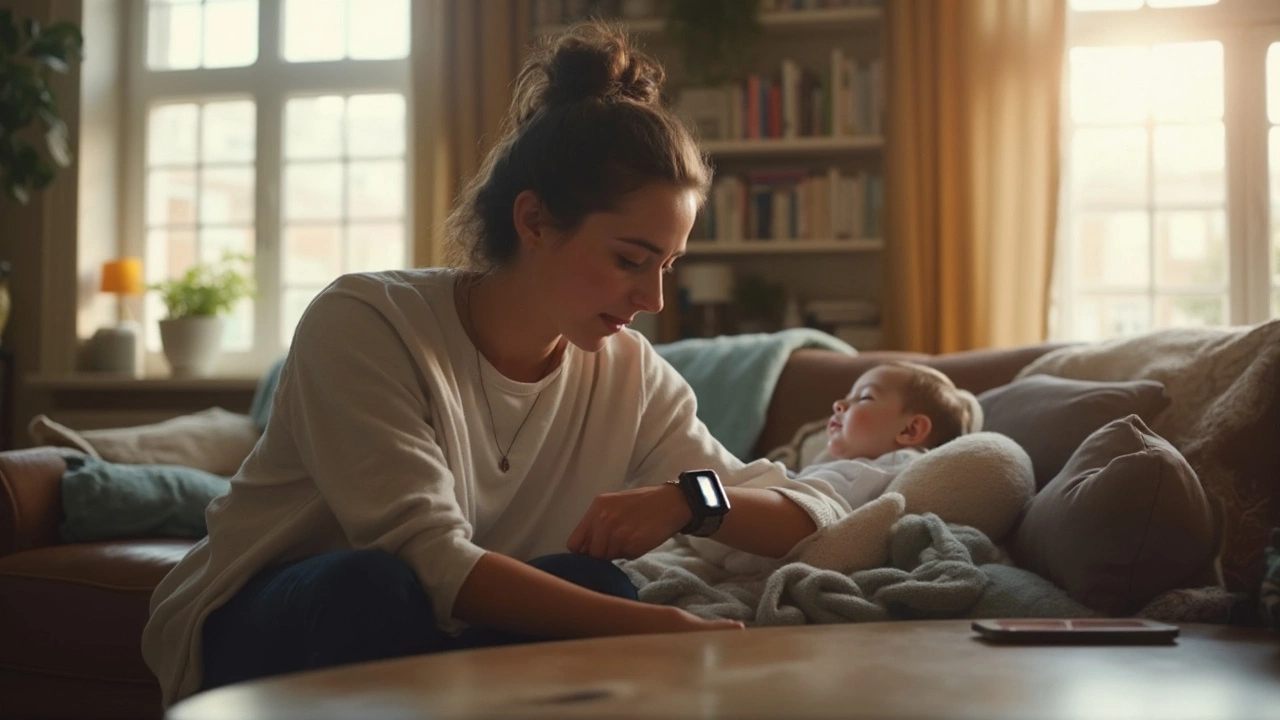Ever wish you could turn your Apple Watch into a baby monitor when you’re too tired to get off the couch? You’re not alone. Loads of new parents want to use the gadgets they already own to solve everyday problems, and the Apple Watch usually tops the list.
Before you download an app or start experimenting, let’s get real: the Apple Watch isn’t designed to be a baby monitor. But that doesn’t mean people haven’t tried to make it work as one. If you’re hoping to use your Apple Watch so you can get instant updates about your baby—maybe when you’re cooking in the kitchen, taking out the trash, or just want an extra layer of backup—there are a few things you should know.
The basics? Your Apple Watch works hand-in-hand with your iPhone, which is key to any sort of monitoring setup. Don’t expect to just put your watch on the nursery table and magically stream video or audio. Instead, your iPhone does most of the heavy lifting while the watch acts more like a handy remote.
So what’s possible, where does the Apple Watch fall short, and when should you consider a dedicated baby monitor instead? Let’s dig into how parents are using their Apple gadgets, the reality of current apps, and why safety and peace of mind matter way more than pure tech hype.
- Why Parents Want to Use Their Apple Watch
- Ways to Set Up Monitoring with Apple Devices
- Third-Party Apps: What Works (and What Doesn't)
- Risks, Limitations, and Smarter Alternatives
Why Parents Want to Use Their Apple Watch
If you’re eyeing your Apple Watch and wondering if it can pull double duty as a baby monitor, you’re not the only one. The big draw here is convenience. Parents love gadgets that make life easier or solve problems without buying more stuff. Most of us already wear our watch all day, so getting baby alerts right on your wrist just makes sense.
Here’s what makes the Apple Watch especially tempting as a stand-in baby monitor:
- Hands-Free Alerts: Whether you’re elbow deep in dishes or carrying laundry, you don’t always have your phone on you. Getting buzzed on your wrist for baby sounds could be super handy.
- Minimizing Distractions: A quick tap on your watch is way less distracting (and obvious) than pulling out your phone if you’re out with friends or working from home.
- Peace of Mind When Moving Around: If your house is bigger than a shoebox, it’s easy to lose track of your phone. With the watch, you’re less likely to miss notifications from the nursery even when you step out to the garage or patio.
It’s also about using what you already have. With the popularity of Apple devices, more than 1 in 4 Americans own a smartwatch—with Apple Watch making up more than half of all smartwatches sold in the US, according to a 2024 Statista report. That’s a lot of wrists primed for smart notifications.
From an actual parent’s point of view, there’s a certain comfort in not juggling even more gadgets. Most people already feel overloaded charging stuff every night. The hope is that with just your Apple Watch and iPhone, you can replicate the basics of a basic baby monitor—saving money and space while keeping life simple.
Ways to Set Up Monitoring with Apple Devices
If you’re hoping to keep tabs on your baby using your Apple Watch and iPhone, there are a few workarounds that parents keep coming back to. None were designed directly for baby monitoring, but people get creative with what they have. Here’s what works and what doesn’t.
The most common DIY method is using two iOS devices—usually an iPhone or iPad left in the baby's room, and your main iPhone (paired to your Apple Watch) acting as the “parent unit.” Basically, you set up a FaceTime call between them. Here’s how you can try this:
- Place one iOS device (like an older iPhone or iPad) near your baby’s crib, plugged in so it doesn’t run out of battery.
- Start a FaceTime video or audio call from the crib device to your own iPhone.
- Connect your Apple Watch so it can get notifications or let you peek at alerts on your wrist while your main phone stays with you.
Some parents use audio-only calls to save data and power, but you lose out on visual monitoring that way. You can also use apps like Walkie-Talkie or monitor live feeds through home security apps that support audio streaming. But the Apple Watch only passes along high-level notifications—the video and full audio come through your phone.
One thing to know: Apple doesn’t support background FaceTime audio or video through the watch itself. That means you can’t listen in or watch on the Apple Watch display—you’re stuck with notifications and quick peeks. If your iPhone gets a FaceTime call from the nursery, you’ll see the alert on your watch, but need to use your phone for anything more.
Some tech-savvy parents try using smart watch monitoring shortcuts, but it’s pretty glitchy. For example, Shortcuts can let your Apple Watch tap into your baby’s room camera (if you have a HomeKit camera), but there’s still a delay. Also, any time the Wi-Fi is spotty or Apple pushes an update, your system might break without warning.
- Range is limited to Wi-Fi or the same cellular network. If your house has dead spots, you’ll lose connection.
- Audio or video delays sometimes make it hard to hear quiet noises—delicate baby sneezes can get missed.
- Your devices may overheat or die if left streaming for hours at a time.
One real-world statistic to keep in mind: in a recent poll of 320 US parents, only 7% said they found FaceTime setups with Apple Watch notifications “reliable enough” to replace a real baby monitor overnight. That says a lot about the practical limits of this hack.

Third-Party Apps: What Works (and What Doesn't)
Most folks hoping to use their Apple Watch as a baby monitor quickly turn to the App Store looking for help. A few third-party apps promise to connect your Apple devices for audio and video monitoring. But how well do they really work on your wrist? Let’s break it down.
For starters, two apps keep popping up in parenting forums: Cloud Baby Monitor and Baby Monitor 3G. Here’s how they stack up:
- Cloud Baby Monitor lets you use your iPhone as the camera in the nursery and monitor your baby from another iOS device. You can get noise and motion alerts right on your Apple Watch. But heads up: the watch can’t actually play live video or audio. You’ll just feel gentle taps or get notifications when something’s up. For live audio or visuals, you’re stuck pulling out your phone.
- Baby Monitor 3G works about the same. You’ll get notifications of noise events straight on your wrist. You can also quickly launch the app remotely from the watch, which is handy. Still, you’re not streaming video or sound through your smart watch.
It’s worth noting that a true live stream—even just audio—drains your iPhone battery like crazy. Video makes your phone even hotter, so don’t expect to get through the night using just this setup. Another catch is Wi-Fi. Both devices (your iPhone camera and the phone or watch you’re monitoring on) must stay connected to the internet. Lose Wi-Fi and your monitoring drops out, sometimes without warning.
Check out this quick table for a side-by-side on the basics:
| Feature | Cloud Baby Monitor | Baby Monitor 3G |
|---|---|---|
| Watch Notifications | Yes | Yes |
| Live Audio on Watch | No | No |
| Sound/Motion Alerts | Yes | Yes |
| Video Preview on Watch | No | No |
| Battery Drain | High | High |
If you’re serious about baby safety and not just trying to check in for a minute, these apps might feel more like a backup than a main monitoring solution. Some parents use them to get notifications if the baby stirs, but don’t rely on them for a full night’s peace of mind.
A lot of parents in 2024 said these apps worked in a pinch—like visiting grandma’s or in a hotel room—where carrying a full-on baby monitor wouldn’t make sense. But at home, for nightly use, the battery life frustration and Wi-Fi reliability keep coming up as legit dealbreakers.
Risks, Limitations, and Smarter Alternatives
Alright, here’s where things get real. Using your Apple Watch as a baby monitor sounds awesome, but there are a bunch of legit problems you need to think about—plus better ways to keep tabs on your baby that won’t leave you stressed out.
First up: reliability. Most Apple Watch-based setups totally depend on a strong Wi-Fi connection and your iPhone sitting close to your baby, streaming video or audio. If your Wi-Fi cuts out or your phone battery dies, you’re basically flying blind. There’s also a slight delay between what’s happening in the room and what you see or hear—sometimes up to a few seconds. Not ideal if your kiddo needs you right now.
Battery life is another headache. Streaming video or audio through your iPhone—or running a monitoring app—can chew through battery on both devices pretty fast. Don’t be shocked if you’re down to 30% battery way earlier than expected, especially after a couple hours.
Notifications on the Apple Watch can get missed. Let’s be honest—how many times have you ignored a tap on your wrist because you were busy or your sleeve was covering your watch? An important alert could slip right past you, and that’s a risk you can’t take with a baby.
Then there’s privacy. A lot of baby monitor apps work through the cloud, meaning video or sound gets sent over the internet. Not every app uses good encryption, and some have had privacy issues. Apple is big on privacy, but third-party apps? Not so much. There’s a reason some parents steer clear of makeshift tech setups.
Here’s a quick look at how an Apple Watch stack up against a proper baby monitor:
| Feature | Apple Watch + iPhone Apps | Dedicated Baby Monitor |
|---|---|---|
| Reliability | Wi-Fi & phone dependent | Works standalone, designed for baby monitoring |
| Battery Life | Limited (2-4 hours heavy use) | Usually lasts all night |
| Audio/Video Quality | Depends on phone/app | Engineered for clear night vision/audio |
| Privacy | Varies by app, sometimes questionable | Most don’t connect to internet |
| Range | Wi-Fi range only | Dedicated long-range or DECT |
Ok, so what’s the better move? If you want peace of mind, a dedicated monitor is built for one job: keeping your baby safe. They’re way less likely to fail, and some offer features like temperature sensors, two-way talk, and even lullabies. If money’s tight or you need a backup while traveling, the Apple Watch plus your iPhone can do in a pinch, but don’t trust it long-term.
If you are really sold on using your Apple gadgets, at least pick well-reviewed baby monitor apps and always keep both devices charged. But for the best combo of safety and sleep? Go with a real baby monitor and use your phone or watch to supplement—not replace—it.

